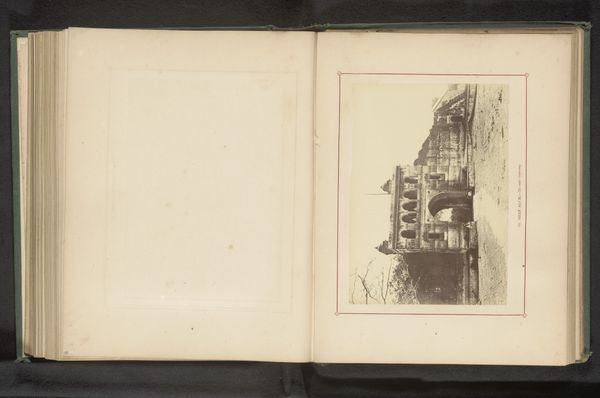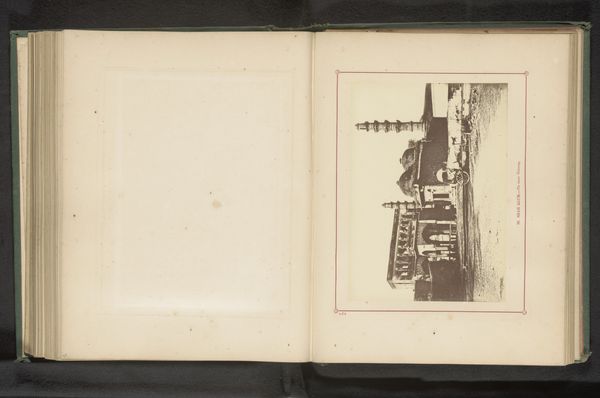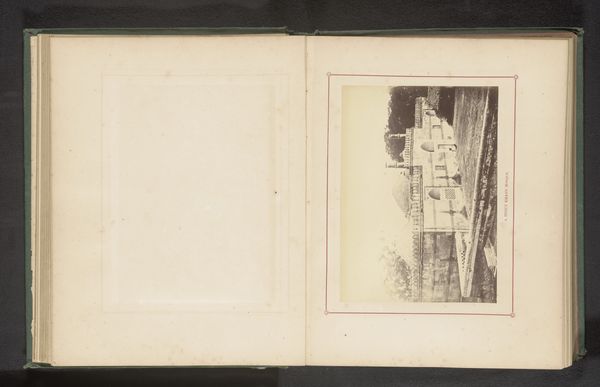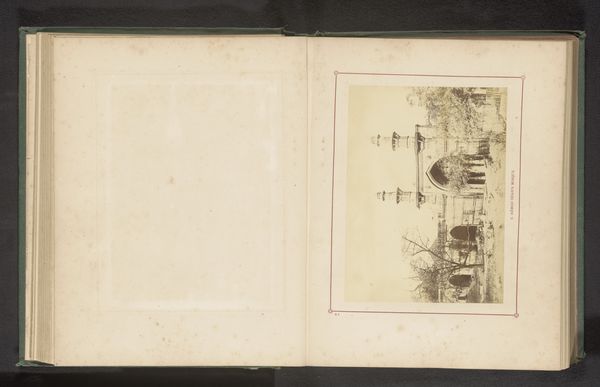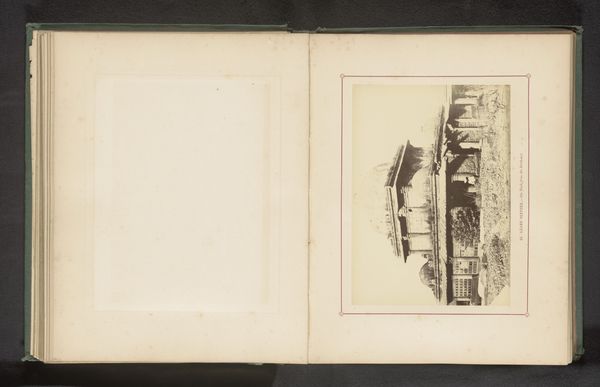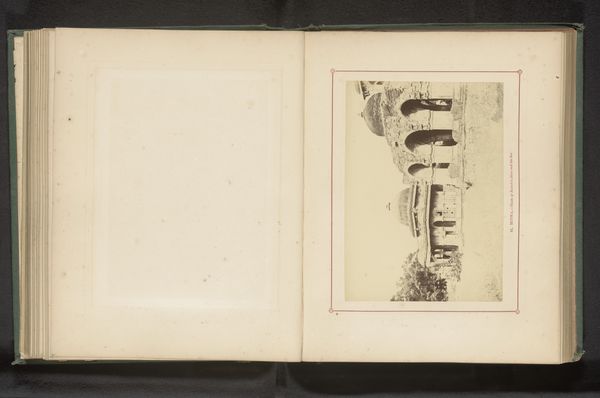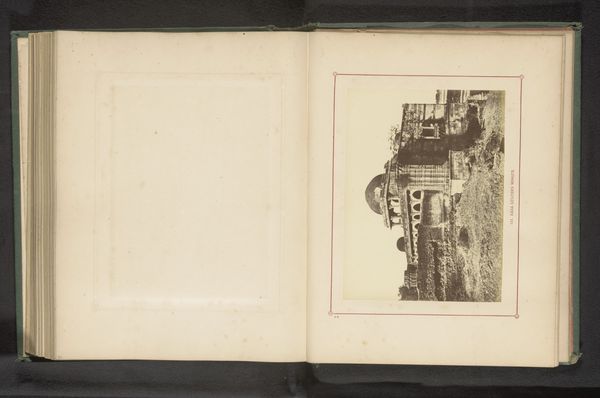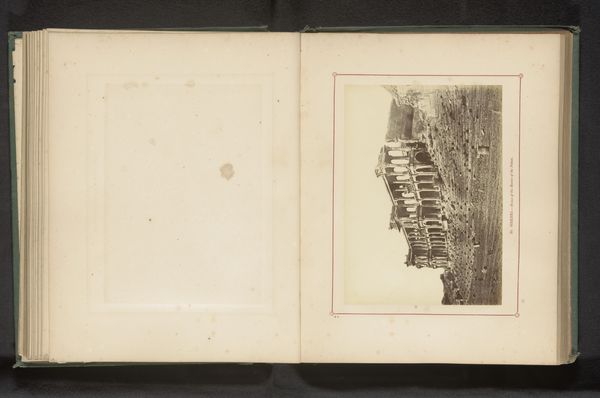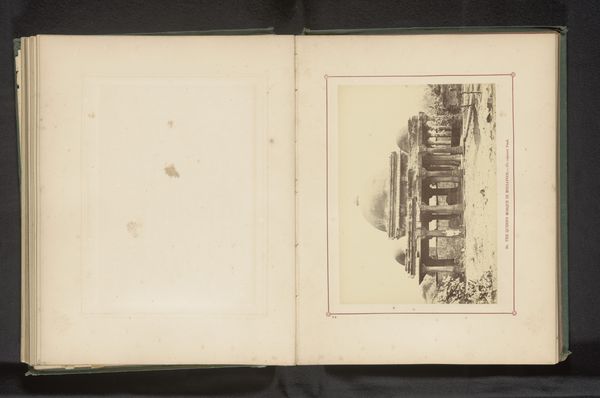
print, photography
# print
#
landscape
#
photography
#
islamic-art
Dimensions: height 142 mm, width 196 mm
Copyright: Rijks Museum: Open Domain
Editor: Here we have a print of "Gezicht op de Saiyad Usman-moskee in Ahmedabad," dating from before 1866, artist unknown, a compelling landscape in sepia tones captured through photography. There's a beautiful symmetry in the minarets and a real sense of place. What strikes you most about this piece? Curator: This image speaks volumes about the power dynamics inherent in colonial-era photography. Think about it – a Western photographer documenting a mosque in India. What does that act of documentation itself represent? Editor: You mean, who gets to tell whose story? Curator: Precisely. It invites us to question the gaze through which we are viewing this image. Whose perspective are we prioritizing, and what narratives are being inadvertently reinforced? Also, consider how the photograph, as a medium, contributes to the construction of an “Orient” readily consumed by a Western audience. Editor: I see what you mean. The choice to present this particular view, framed in this particular way, has implications. It's not a neutral record. Curator: Absolutely. We can delve into postcolonial theory, exploring how such images contribute to the "othering" of non-Western cultures. How might a contemporary artist from Ahmedabad re-present this mosque, challenging the colonial gaze? Editor: So, by critically examining historical context, we start unpacking layers of meaning that go beyond just the visual representation. It encourages empathy. I'm rethinking how I initially appreciated its aesthetic qualities. Curator: And hopefully encourages a deeper understanding of how power and representation intertwine, even in something as seemingly straightforward as a landscape photograph. Editor: It definitely does that. Thanks for the added perspective!
Comments
No comments
Be the first to comment and join the conversation on the ultimate creative platform.
